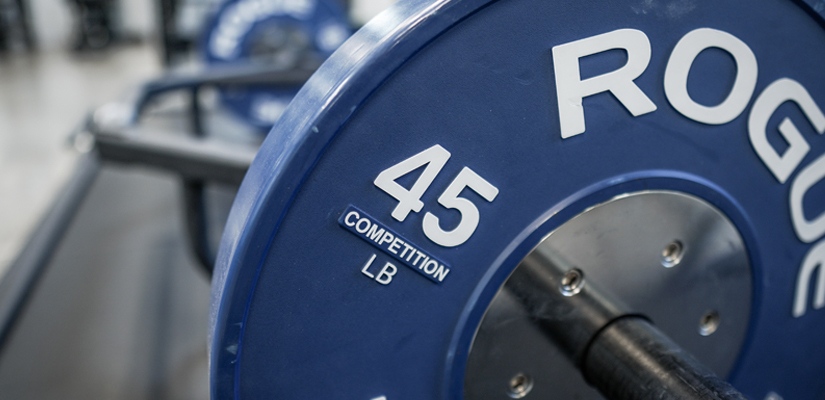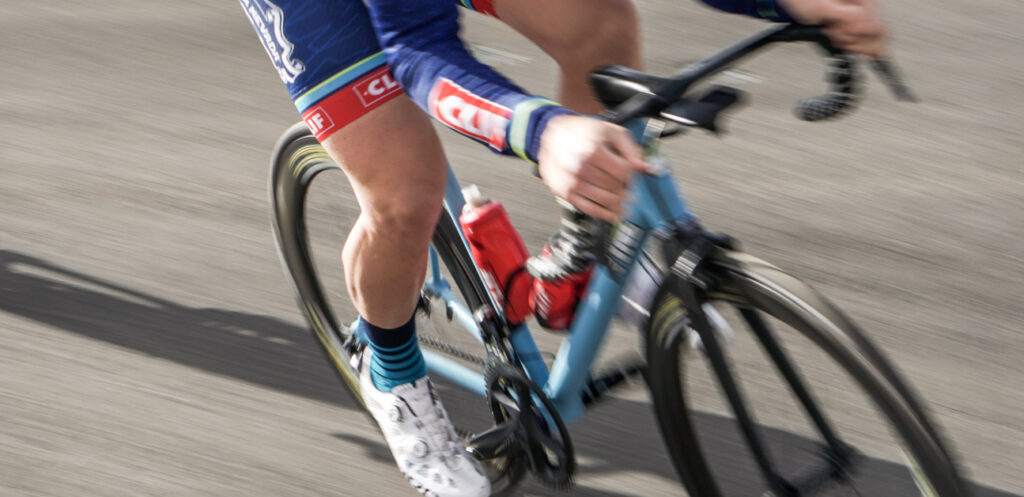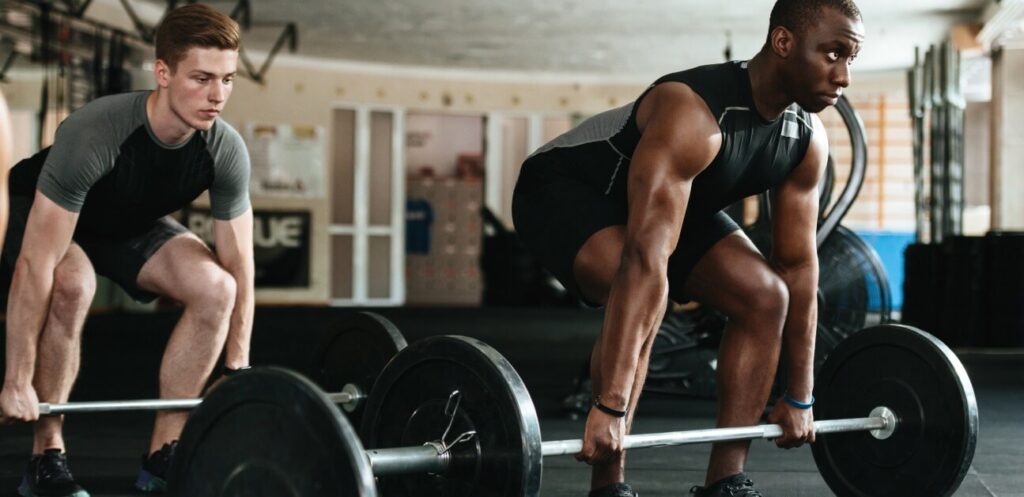Strength Training for Cyclists: 10 Exercises for Cycling Weight Training

Strength Training for Cyclists: Boost Power, Endurance, and Injury Resistance
Strength training plays a key role in helping cyclists build power, address weaknesses, and prevent injury—making it an essential part of getting faster and more resilient on the bike.
This guide will walk you through 10 essential strength exercises and how to fit them into your cycling training, so you can confidently incorporate strength work that complements your cycling, supports long-term progress, and fits within a structured training plan.
Not sure how to balance strength and endurance? TrainerRoad detects early signs of fatigue and adapts your training plan—so you can keep building fitness without burning out → Learn More
Table of Contents
5 Bodyweight Strength Training Exercises for Cyclists
If you’re just starting strength training as a cyclist, we recommend beginning with bodyweight movements. These five exercises are ideal for beginners. They help build a foundation of strength without gym equipment and reinforce the proper form needed before adding weights. Always prioritize form and control over intensity.
1. Spiderman Pushups
These reinforce core strength and activate everything from your hips to your shoulders. They also help improve hip flexibility by pulling your knees to your elbows. Start with 1 to 3 sets of 10 reps and gradually build to 3 sets of 15.
2. Planks
Planks are excellent for core stability. Begin with 30-second holds, resting 30 seconds between sets. Repeat 3 to 5 times. Progress to 2-minute holds. Incorporate side planks for variety.
Adaptive Training
Get the right workout, every time with training that adapts to you.
Check Out TrainerRoadTrainerRoad adapts your cycling workouts to match your current fitness and fatigue, so you can keep progressing while adding strength training. Learn how → Explore TrainerRoad
3. Pistol Squats
Improve single-leg strength and hip stability. Start with assistance (like a band or chair) and gradually increase depth and control. Begin with 3 alternating sets of 10 (5 per leg) and work up to 3 sets of 10 per leg.
4. Pull Ups
Pull-ups build upper body strength and support functional fitness—benefits that may contribute to overall movement quality and daily activity. Use eccentric reps or holds if you’re just getting started.
5. Planking Rows
Strengthen your core, back, and shoulders while improving posture and bike position. Begin with 3 sets of 10 alternating rows and work toward 3 sets of 20. Increase weight or narrow your stance to progress.
TrainerRoad gives you the structured cycling plan you need to turn strength into real performance gains → Start Training Smarter
5 Best Weight Lifting Exercises for Cyclists
If you have experience with weight lifting, these five compound lifts offer the most time-efficient strength gains for cyclists. Focus on proper form and gradual progression to minimize injury risk.
1. Squats
Target glutes, quads, and hamstrings—key muscles for power transfer. Maintain core tension and a flat back. Drive upward through your midfoot with heels on the ground.
2. Deadlifts
Strengthen the posterior chain. Use straight-leg deadlifts (also called Romanian deadlifts) with lighter weights to target the hamstrings and glutes, supporting muscular endurance in the posterior chain. In contrast, traditional deadlifts with more knee bend place greater emphasis on the quads and allow for heavier loading and maximum strength development. Adjust reps and load based on your goals.
3. Bench Press
Develop triceps, chest, and shoulders—important for upper body stability when riding.
4. Military Press
Target the shoulders, triceps, and upper back—muscles that support posture and stability during long rides. Keep your core engaged and press with control.
5. Barbell Row
Mimics handlebar pulling during hard efforts. Builds grip, back, and arm strength.
Strength Training Guidelines for Cyclists
Approach strength training with the same structure and intent as cycling workouts. Your goal isn’t to build bulk—it’s to build functional strength that supports performance and durability on the bike.
Start Small and Progress Gradually
Master bodyweight form first. Add weight only when you can maintain good form through full range of motion.
Train With Low Volume, Moderate Load, and High Recovery
For most cyclists, short sets of 3–5 reps with longer rest periods (3+ minutes) are more effective than high-rep training. The goal isn’t to mimic the endurance stress of cycling, but to build strength that complements it with different adaptations.
Key Benefits of Strength Training for Cyclists
- Increased Power Output
- Better Injury Resistance
- More Efficient Muscle Recruitment
- Improved Sprinting and Climbing
- Enhanced Core and Bike Handling Stability
Whether you’re just starting out or racing at a high level, strength training helps reduce injury risk, improve movement efficiency, and address weaknesses that limit cycling performance.
Build functional strength off the bike. Then use TrainerRoad to turn it into on-bike performance with structured, adaptive cycling plans that evolve with your fitness → Start Your Plan
How to Time Strength Training With Cycling
During the Base Phase:
- Focus on building strength with higher volume and intensity
- 2–3 strength sessions/week
- Emphasize core and stability
During Build/Specialty Phases:
- 1–2 maintenance sessions/week
- Focus on low-fatigue exercises that maintain core strength and stability—these support posture and pedaling efficiency without compromising recovery during high-intensity cycling blocks
When to Schedule:
- When possible, schedule strength work on the same day as an easier ride—not your rest day. This helps consolidate fatigue, allowing your true rest days to be fully restorative.
- Beginners: Consider lifting before riding. This ensures you’re fresh for technical strength work, which helps reinforce good form and reduce injury risk.
- Experienced riders: You may prefer riding first, especially if you want to prioritize key cycling workouts. If your strength work is lighter and doesn’t compromise form, this can be an effective approach.
TrainerRoad adapts to your fatigue level, making it easier to fit strength training into your week without overtraining → See How It Works
Start Your Comeback with TrainerRoad →
Conclusion and Other Resources
Strength training makes you a stronger, faster, more resilient cyclist. And when combined with the right cycling workouts, the results are even more impactful.
Use strength to build durability. Use TrainerRoad to turn it into speed. Personalized, data-driven plans adapt as your fitness evolves—so you’re always training at the right intensity → Build Your Plan Now
Strength Benchmark Calculator
Check out our simple strength benchmark calculator to determine whether you should build or maintain strength. Enter your weight and gender to see the recommended minimum strength levels for your rider type. (Note: This is a test, not a training plan.)
More on Strength Training for Cyclists:
For more cycling training knowledge, listen to Ask a Cycling Coach Podcast— the only podcast dedicated to making you a faster cyclist. New episodes weekly.


